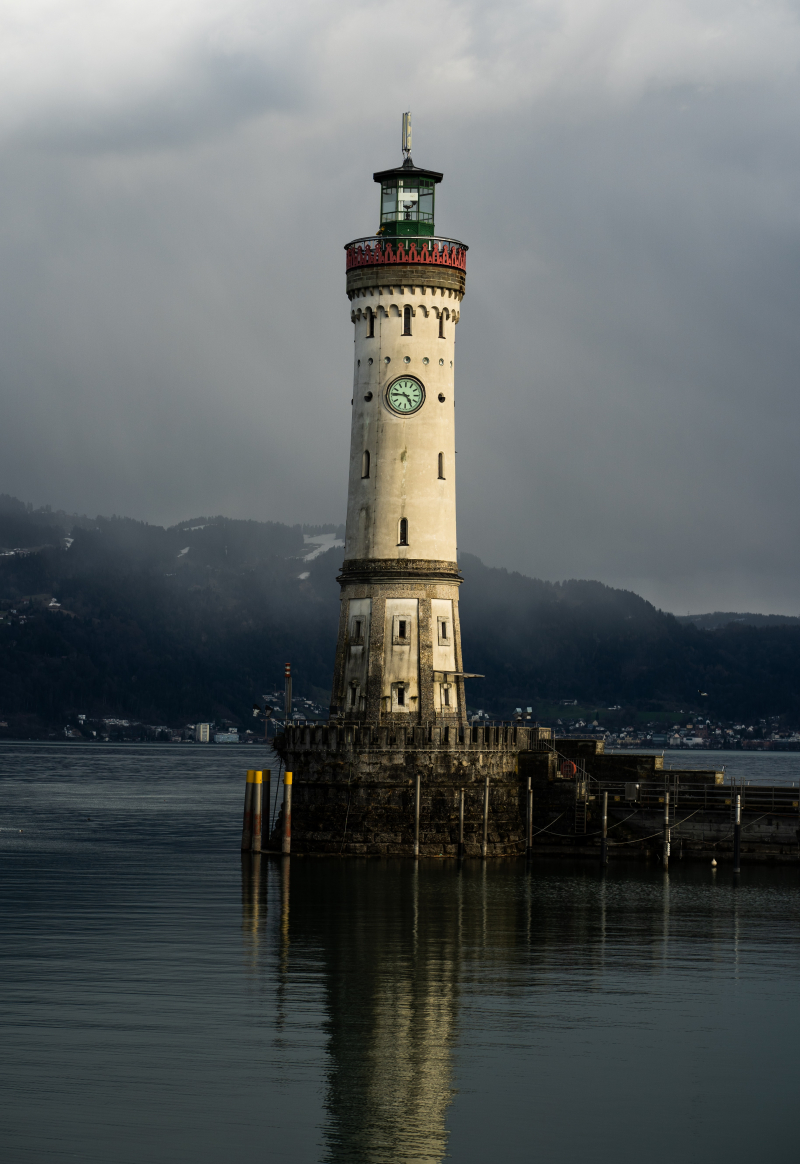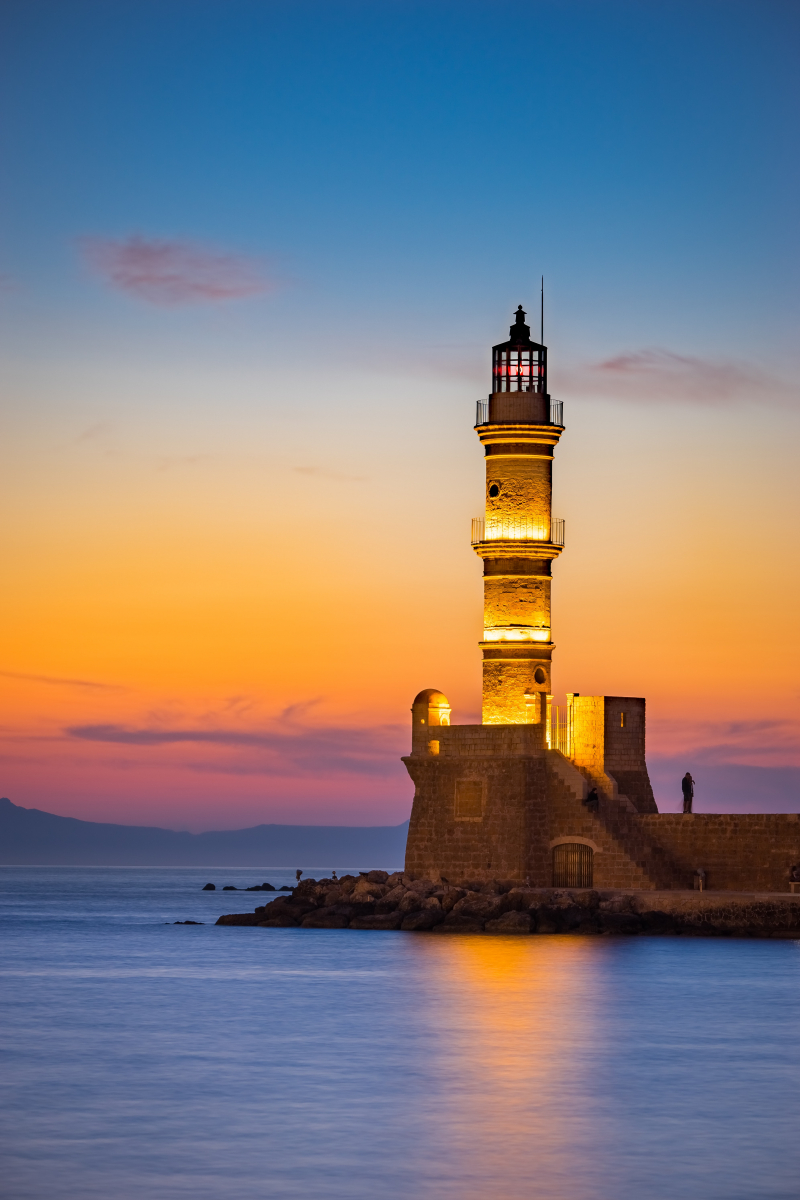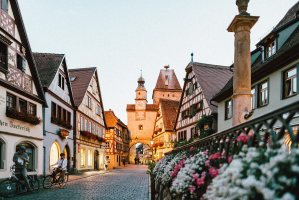Top 7 Best Lighthouses That Will Brighten Your Travels In Europe
Lighthouses have illuminated starry nights and shown mariners the way home for many years. They are our source of illumination. Here is the list of the best ... read more...lighthouses that will brighten your travels in Europe for you to consider for your trip.
-
One of Scotland's most well-known lighthouses, Neist Point, is situated close to the Glendale village on Skye's westernmost point. Although it's a short distance to the bottom, the concrete route can occasionally be extremely steep. A top site for landscape photographers, the walk offers breathtaking views of the tall cliffs and the lighthouse itself. At sunset, the panorama is even more breathtaking. This walk follows the same road both down and back because there is only one safe route. The walk is 2.2 kilometers long and takes on average, 45 minutes to complete (with no stops).
Neist Point is located in the "Durinish" neighborhood on Skye's West Coast. The single-track road's absolute end, close to Glendale, is where the hike begins. In all types of weather, this hike is not recommended. It is not advised in windy or foggy weather because it brings you close to towering cliffs (low visibility). 10.5 miles from Dunvegan, at the very end of the single-track road, is where the carpark is located (taking 30 minutes to drive). It is 31 miles away from Portree and will take around an hour to drive there. The parking lot is small and gets full quickly, however there are more spaces along the road further back down the road.
Although the surrounding cliffs can be seen from the parking lot, the lighthouse itself cannot be seen until you go back along the bluff to the right of the parking lot (worth doing as it offers a great view or photo). Keep dogs on a short leash as there will be sheep grazing beside the route. The Walk Slideshow provides a step-by-step description of everything you will face, so be sure to check through it.
Location: Scotland

Source: Photo by Ryan Denny on Unsplash 
Source: Photo by Fredrik Gyllenhammar on Unsplash -
The Saint-Mathieu lighthouse was constructed in 1835 amid the ruins of the historic Abbaye Saint-Mathieu de Fine-Terre and is situated on Pointe Saint-Mathieu in Plougonvelin, close to Brest in Finistère. The cape's name comes from the Abbey, which was built to contain the skull of Saint Matthew the Evangelist and was dedicated to him. It was once a Benedictine abbey, but in the middle of the 17th century, the Maurists restored and reformatted it. The first abbey at this region is said to have been established in the sixth century by Saint Tanguy, who selected it for its remote location amid the territories he had received. Due to its proximity to the sea, the Abbey was able to be mostly sealed off from the outside world while still being accessible.
With a theoretical range of 29 nautical miles, the lighthouse is a significant lighthouse along the French coastline (around 55 km). It indicates the direction of the Chenal du Four, which temporary ships used to follow on a north-south axis before the creation of the Rail d'Ouessant, the maritime traffic separation system off the island of Ouessant, the westernmost island of Brittany and France and signifying entry (or exit) from the English Channel. With an average of 148 ships each day, it is one of the busiest sea routes in the world. The alignment of Saint-Mathieu with the Portzic Lighthouse also shows the entrance to the Goulet de Brest, a 3-km-long strait that connects the Brest roadstead to the Atlantic Ocean. The lighthouse, which was designated as a monument historique on May 23, 2011, the ruins of the abbey, and a semaphore are all located on the promontory of Saint-Mathieu.
The lighthouse is open to the public, and after a climb of 163 steps you can enjoy a magnificent panorama. The site also houses the National Memorial of Sailors who died for France, erected in 1927.
Location: France

Source: Photo by Florian Gerus on Unsplash 
Source: Photo by Jérôme Boursier on Unsplash -
The landmark of the city of Genoa, the Lighthouse of Genoa, also known as Lanterna, is open for visits from Friday through Sunday. On top of Capo di Faro (Lighthouse Cape), where people once lit bonfires to aid in navigation for sailors, Genoa's Lighthouse was constructed in 1128. The Lighthouse operated as both a fortification and a warning beacon. It was separate from the city walls during the Middle Ages, and it wasn't until the 17th Century that it joined the protective walls. The city's coat of arms, a red cross on a white background, was painted on the tower's lower portion in 1340.
The Lanterna, the official lighthouse of the Port of Genoa, has been in operation for nearly nine centuries. The only lighthouse in Italy with a lighthouse keeper, it is also the most significant. Its light is seen from 50 kilometers away. It is the tallest lighthouse in the Mediterranean at 249 feet (76 meters). Its height is 383 feet when taken into account along with the natural rock it rests on in its entirety (117 m). Additionally, it is the third-oldest active lighthouse in the world. Each of its two square sections is built with a terrace, and the entire thing is topped with a lantern that shines light.
Only the first 172 steps are open to the public. It is not possible to reach the top of the lighthouse because its upper part is under military control. The Lanterna can be reached only on foot through the “Lanterna promenade”, a 800-meter path, in part on the 17th Century walls. Lanterna promenade is part of Lanterna Park and is open to the public every day.
Location: Italy

Source: Photo by Paulius Dragunas on Unsplash 
Source: Photo by Chris Curry on Unsplash -
One of Germany's most picturesque and frequently photographed lighthouses is the Lindau Lighthouse. It is a historic tower on Lake Constance in Lindau with a towering pyramidal roof. The base of the lighthouse is 24 meters in diameter and is 33 meters tall. When it was finished in 1856, it replaced the Mangtrum Tower, which had been built in 1230, as the port's prior lighthouse. The 108-foot-tall building is unusual among lighthouses in that it also has a huge clock.
The clock at the Lindau Lighthouses is easily seen from the city's center, and just as its beacon guides ships safely to land, it ensures that everyone in the city is always aware of the time. For several centuries, the Mangtrum Tower served as a military structure and provided Lindau with defense. The light was produced by an open oil fire in the early years of operation. At that time, the keeper would have maintained a steady flame in large pans of fire while also operating a bell and foghorn. Later, the firing was changed to kerosene, and finally to gas.
After several years of negotiations, the port area, and thus the lighthouse, were transferred to the town of Lindau in April 2010. It is open to visitors, who may find information on local nature and on Lake Constance shipping. The Lindau Lighthouse continues to be a major tourist attraction in Germany.
Location: Germany

Source: Photo by Chris Mai on Unsplash 
Source: Photo by David Hertle on Unsplash -
In Vasto, Italy, there is a working lighthouse known as Punta Penna Lighthouse (Italian: Faro di Punta Penna). It is the second tallest lighthouse in Italy, behind the Lantern of Genoa, and the eighth tallest "conventional lighthouse" in the world, standing at a height of 70 meters (230 feet). At the port of Vasto, it is situated in a key strategic area along Via Madonna della Penna. It was constructed in 1906 and has undergone numerous reconstructions.
Part of the original lighthouse was smashed by the retreating German troops in 1944, and it was eventually dismantled. It was rebuilt beginning in 1946 under the direction of architect Olindo Tarcione, and it reopened on May 2, 1948. The lighthouse is distinctive since it has a two-story base that resembles a typical brick building and used as dwelling for the light keeper family as well as a location for some administrative offices. 307 steps of spiral stairs climb to the peak.
Location: Italy

Source: Photo by Anders Jildén on Unsplash Everything 
Source: Photo by Paulius Dragunas on Unsplash -
The breathtaking and serene Ynys Llanddwyn is where the Twr Mawr Lighthouse is located (Llanddwyn Island). It stands at the tip of the island and designates the western entrance to the Menai Strait. Beach view of Twr Mawr lighthouse on Llanddwyn island. It is speculated that the lighthouse tower on Llanddwyn Island may have once been a windmill due to its resemblance to many of the windmill designs on Anglesey. A small window can be seen on either side of the door, located on the northeast side. The two floors above it also have small windows, but the top floor is windowless.
A short walk along the beautiful sandy beach of Llanddwyn Bay to see the picturesque Twr Mawr Lighthouse, and the mountains of Snowdonia on the horizon. One of the most stunning places in Wales. Best Enjoyed during sunrise or sunset depending on the tide. The ideal time to visit would be for sunrise, as the sun rising across Snowdonia would certainly give the best photos of the lighthouse and this stunning coastal area. If you have a chance, head into the snow-covered mountains in the afternoon, and take a pleasant refreshing sunrise coastal stroll.
Location: Wales

Source: Photo by Steven Hanna on Unsplash 
Source: Photo by Daniel Gregoire on Unsplash -
St. Mary's, which is accessible between the tides by a brief causeway, has all the appeal of a small, seasonal island. The Lighthouse, built in 1898 on a treacherous shipping coast, was still in use until 1984, when modern navigating methods took its place. North Tyneside Council has since run the Lighthouse and its keepers' houses as a visitor center. A section of rockpools, clifftop grassland, a beach, and recently developed wetland habitats can be found in the nearby Nature Reserve.
For the most breathtaking views of the North East coast, ascend the lighthouse's 137 steps to the top. If you are unable to climb the stairs, a video facility enables you to see the same views at ground level in real time and in color. Other displays include background information on the Lighthouse and provide an overview of the fauna found in the St. Mary's Nature Reserve. Coach operators, schools, universities, and youth and community groups are all invited to make reservations. "As an only light but the like an only shine on Earth", that is the sentence everyone living around here talk about St.Mary's Lighthouse.
Location: Northeast England

Source: Photo by William Bout on Unsplash 
Source: Photo by Frederik Holmgren on Unsplash



























